Following 2004’s Spider-Man 2 (Raimi), Marvel Films seemed to take a creative downturn. Perhaps the excellence of that film raised the bar too high and the standard, run-of-the-mill comic book adaptations began to pale in comparison. Or perhaps comic book filmmakers had settled into a generic, creatively unexciting rut during this time period. Regardless, in the summer of 2007, after the still-fresh disappointment of Spider-Man 3 (also Raimi), I found myself not expecting much from Fantastic Four: Rise of the Silver Surfer. The first film in the series, Fantastic Four (Story, 2005), was particularly uninspired and I was having a hard time enjoying any Marvel Films at the time. After watching Rise of the Silver Surfer for the first time, I found that I enjoyed it on several levels, but it still did not impress me.
The film is short, the shortest Marvel film to date, and seems a bit scattered. The character dynamics are extremely simplistic, almost juvenile. The visual effects and action are cartoonish. And so I did not watch the film again for over a decade, until I reached it for this series. But in my research of the film, I turned up one tiny, seemingly benign fact that changed my entire perspective on the film: it’s rated PG. A handful of Marvel films have been rated R (the Blade films, Punisher films, Deadpool films, Logan), and all of the rest have been rated PG-13 except for Fantastic Four: Rise of the Silver Surfer. Suddenly, the whole film made sense. Rated PG, 92-minute running time, cartoonish action and effects, simplistic character dynamics: this is a film for children. It’s a kids’ movie! Many people might argue that all superhero films qualify as kids films, and no self-respecting film buff in his 30s should spend years analyzing them. I humbly disagree, and argue that Rise of the Silver Surfer stands as Marvel’s only film aimed primarily at children. I cannot speak to how intentional this is, but my enjoyment of the film greatly increased with this perspective.
The film still has its issues, primarily its failure to stay true to the comics regarding such characters as Dr. Doom and Galactus, but it’s a fun, lightweight trifle.Fantastic Four: Rise of the Silver Surfer also, by pure happenstance, marks the end of an era for comic book films. The year 2007 closed the first decade of the explosion of Marvel properties adapted to films (16 films in ten years). It was also the last year that audiences accepted a certain type of unfaithful, soulless comic book film at face value. The year 2008 saw an enormous leap forward in the quality and consistency of comic book films, and suddenly the old style seemed outdated.
For a broader overview of the Fantastic Four in comics, please refer to my article on Fantastic Four (Story, 2005). To catch everybody up, brilliant scientist Reed Richards, his girlfriend Susan Storm (in some incarnations, also a brilliant scientist), her brother Johnny Storm, and Reed’s best friend and pilot Ben Grimm are bombarded with cosmic radiation, transforming them into the Fantastic Four. Reed (Mr. Fantastic) can stretch, Sue (the Invisible Woman) can turn invisible and create force-fields, Johnny (the Human Torch) can become covered in flames and fly, and Ben (the Thing) becomes a super-strong rock monster.
In this article, I ocus specifically on the Silver Surfer and Galactus. Both characters made their debut in the Galactus Trilogy storyline told in Fantastic Four #48-50 (March-May 1966), which is widely considered to be the best Fantastic Four story and one of the best superhero storylines of all time. For the story, Jack Kirby and Stan Lee conceived of a new villain, Galactus, who operates more like a force of nature than a true villain. Galactus possesses near omnipotence and moves through the universe consuming energy from planets, killing all life on them, to sustain himself. Galactus has no hate or malice towards the planets or their inhabitants, he’s not evil, he’s simply a creature that needs to feed. The primal fear of facing a being that is so much more powerful than humans, that prepares to destroy Earth out of basic need, is very powerful. Galactus is heralded by his servant, the Silver Surfer, who seeks out suitable planets and draws Galactus to them. Over the course of the story, Galactus ceaselessly builds his planet-consuming machine, while the Fantastic Four try everything to stop him. Meanwhile, the Surfer is knocked out in an early fight. He awakens in the apartment of Alicia Masters, girlfriend of the Thing, who helps the Surfer see the beauty and value of humanity.
Ultimately, the Fantastic Four are helped by the Silver Surfer and another cosmic being, the Watcher, to drive away Galactus. As punishment for turning on him, however, Galactus strands the Silver Surfer on Earth. The Surfer became a recurring character in Fantastic Four from 1966-1968 before landing his own solo title. Although it lasted only 18 issues, Silver Surfer was a socially conscious and insightful comic book, which spoke directly to the youth culture of the late-’60s. Stories typically saw the Surfer taking a detached, objective view of humanity, puzzled by our destructive tendencies. Stan Lee, writer of every issue, often cites this book as one of his proudest achievements at Marvel. Over the years, the Silver Surfer returns to space, and Galactus frequently returns to Earth. Never are the characters as powerful, however, as they were in their earliest appearances. This made adapting the Galactus Trilogy an obvious choice for the second Fantastic Four film.
Fantastic Four: Rise of the Silver Surfer begins with Galactus destroying a planet. His herald, appearing as a silver streak, then shoots across the galaxy to Earth. On Earth, the Surfer’s arrival causes strange weather and electrical disturbances. Among other things, it delays the Fantastic Four at an airport, forcing them to fly a commercial jet in coach. I understand the appeal of this sequence to some, a bunch of air travel gags featuring super-powered individuals. (Boy, I wouldn’t want to be squished next to the Thing on a plane! Haw haw.) It especially works when you remember this movie is aimed at kids. However this opening pinpoints one of my biggest disappointments with these Fantastic Four films: the team is too down-to-Earth and mundane. They are not fantastic. The Fantastic Four of the comics explore previously unseen places on Earth, throughout the galaxy, and in other dimensions. Rise of the Silver Surfer is admirable for making the adventure more global, but I want my Fantastic Four to be cosmic. These films seem content to have them fly in planes and stop armoured car robberies. We get a tiny taste of space in this film, but most of the proceedings are grounded.
This is a larger issue for all superhero films. Comic books are filled with large-scale, galactic adventures, but comic book films refused to go fully cosmic until Guardians of the Galaxy (Gunn, 2014). So this issue of superhero films being too grounded is prevalent, but it’s particularly egregious when it comes to the Fantastic Four.
The other aspects of the Fantastic Four are handled much better in this film, however. As the only superheroes on Earth, and ones with no secret identities, the Fantastic Four are celebrities and tabloid fodder. This level of notoriety means that Reed (Ioan Gruffudd) and Sue (Jessica Alba)’s impending nuptials have turned into a media sensation. This close to Prince Harry and Meghan Markle’s recent wedding, it’s easy to imagine the circus surrounding a superhero wedding. It makes Sue doubt whether they will ever leave the media spotlight, and whether they could raise a family while living under its glare. It also hampers Reed’s reputation as a scientist. Although he’s constantly analyzing phenomena and building gadgets, the world at large, and the US military specifically, no longer take him seriously as a scientist. Of course, Sue’s brother Johnny (Chris Evans) is all too happy to take advantage of his fame through partying, endorsement deals, market research, and auctioning off exclusive photo rights to the wedding. These character beats are well-presented, and take advantage of the uniqueness of the Fantastic Four’s situation.
Rise of the Silver Surfer also does a much better job than Fantastic Four at giving a sense of family to the group. All of the issues between the characters are very straightforward and obvious, and they each say exactly what they’re feeling. But remember, this is a film for kids. Beyond her concerns about the media circus, Sue worries that Reed spends too much time working. Sue is, sadly, given little to do beyond being a doting soon-to-be wife in the first two-thirds of the film. Reed feels compelled to constantly work, especially when the Surfer starts causing problems on Earth, but he ultimately tells Sue he will quit the Fantastic Four with her in favour of a quiet life.
This irks Johnny, who emerges as the protagonist of the film. On the surface, Johnny seems to enjoy being a wild celebrity, but he also sees Reed, Sue and even Ben (Michael Chiklis), with his girlfriend Alicia (Kerry Washington), moving on and leaving him behind. He’s also increasingly called out for being reckless and dangerous to the the team, and encouraged to grow up. Johnny must learn to be less selfish and more mature. If that isn’t the moral of a kids movie, I don’t know what is. He’s the youngest, most juvenile member of the team, so he’s the obvious choice of central character for a kids’ movie. Meanwhile, Ben has no story or character arc. Even in such a short film, the writers should have found something for him to do. There’s no nuance to any of the character arcs, but the cast sells them. And the bickering dynamics really come to life in this installment: Johnny and Ben chide each other like brothers, Sue and Johnny have a bratty sibling relationship, Reed endures Johnny as a slightly-annoying brother-in-law. It all works pretty well.
US General Hager (Andre Braugher) approaches Reed to track the global disturbances. Initially he refuses, due to his imminent wedding, but then does it anyway without Sue’s knowledge. Things come to a head when the Silver Surfer (played by Doug Jones, voiced by Laurence Fishburne) flies over Manhattan during the wedding, disastrously interrupting it. Johnny gives chase, in a truly exhilarating sequence. The Human Torch/Silver Surfer chase sequence formed the bulk of the first teaser trailer of the film, so I urge you to go check it out, above. Johnny is severely outmatched, and the Surfer throws him back to Earth. Contact with the Surfer’s cosmic energy, however, causes Johnny to switch powers with his teammates through contact. This power-switching is played for cartoonish laughs throughout. Sue gets Johnny’s flame powers, which burns off her clothes (because a naked Jessica Alba seemed to be a contractual necessity in these films). Johnny briefly takes Ben’s powers, turning into an ugly rock monster. Indeed, there are many instances in Rise of the Silver Surfer when superhero powers are played as gags, and paired with a zippy cartoon score to really sell it. It’s perfect for a kids movie. More seriously, Johnny does not follow orders during a later attack on London, bumps into Reed, and the power-switching nearly costs lives.
With the constant bickering and failure to stop the Surfer, Hager explores other options. Hager’s relationship to Reed is another kids’ movie trope. Despite both being professional men in their 40s, he mocks Reed for never having played football like a school bully would mock a nerd. It may seem out of place, but in a kids’ movie you need the moment where the smart kid stands up to the bully:
No, you’re right, I didn’t [play football]. I stayed inside and studied, like a good little nerd. And fifteen years later, I’m one of the greatest minds of the 21st century, I’m engaged to the hottest girl on the planet, and the big jock who played quarterback in high school? Well he’s standing right in front of me asking me for my help. And I say he’s not gonna get a damn thing, unless he does exactly what I tell him, and starts treating my friends and me, with some respect.
Regardless, the bully/Hager makes the baffling decision to call in Doctor Doom (Julian McMahon) to help Reed stop the Surfer. At this point, it has been determined that the Silver Surfer’s arrival always results in a planet’s destruction, so Doom claims it is in his best interests to help save the world. This continues a long tradition of superhero sequels where heroes and villains team-up to face a larger threat (see Blade 2, Del Toro, 2002), X2, Singer, 2003), Thor: The Dark World, Taylor, 2013). But it’s short-lived. Reed manages to separate the Silver Surfer from his board, the source of his power, but the Fantastic Four learn of the greater threat that is coming: Galactus. They are unable to stop Doom from stealing to board for himself, however, and they chase him to Shanghai. Thus, Rise of the Silver Surfer wastes one of Marvel’s great villains for a second time. McMahon’s Doom is still the sleazy, quippy businessman of the first film. The character never approaches the regal, super-intelligent viciousness of the comics. His plan also makes no sense. He, rightly, acknowledges that the Earth is in danger, thus endangering his interests. Then he steals the power source from the one being that could stop Galactus. What does he hope to achieve after Earth is destroyed? This short-sighted evil for evil’s sake diminishes the character and wastes a lot of screen time.
Doom tries to kill the Silver Surfer, but Sue gives her own life to save him. The sacrifice demonstrates humanity’s worth and compassion to the Surfer. Meanwhile, Johnny steps up and takes on the entire team’s powers to fight Doom. It’s the perfect cartoonishly triumphant, silly sequence to cap off Johnny’s character growth. I’m positive kids love to see Johnny flying through the air, punching Doom with a stretchy, flaming Thing fist. The surfboard is recovered, but Galactus has arrived at Earth as a big swirling space cloud. I recognize that Galactus’ comic book appearance (a giant, husky man in a purple outfit and tall headgear) is silly and hard to adapt to film. But the swirling space cloud is terribly undefined as a threat, rendering the climax pretty underwhelming. The Surfer uses some of his power to revive Sue, and the rest of it to seemingly destroy himself and Galactus. It’s a quick, ambiguous end to a vague threat.
In the end, Reed and Sue recognize the need for the Fantastic Four, and decide not to quit the team. One quickie wedding in China, and they are off to their next adventure. Meanwhile, in space, the Silver Surfer may still be alive…
The production of Fantastic Four: Rise of the Silver Surfer is troubled, which is why I’m surprised the film holds together as well as it does. Honestly, I think the unambitious, simplistic, kid-focused approach helps in this regard. Anything more complex or mature would have shown signs of inconsistencies, but this is a live-action cartoon. The Galactus design was not finalized until a couple months before opening, and certainly could have used more time. Apparently, it was not decided whether the Silver Surfer would speak or be silent until a couple months before release. A silent Surfer would have been a bold, interesting choice, but the filmmakers made the more straightforward decision to have Laurence Fishburne voice the character. Given how much spoken exposition the character gives, it’s shocking that he’s almost silent. The film would have made little sense without his info dumps. After the film’s release, Jessica Alba told a story that director Tim Story told her not to emote so much during a crying scene. He urged her to “cry pretty”, explaining that tears could be put in digitally later (“Jessica Alba: The Girl Can’t Help It”, by Howie Kahn, Elle December 2010). This gives a sense of what the actors were facing on set. But once again, the talented cast mostly pulls it off.
In a surprisingly candid commentary on the film, editors William Hoy and Peter S. Elliot open up about how much of the film was constructed in the editing room, after an unfocused principal photography. Case in point: the airport scene. Initially, the London action sequence opened the film, then the Fantastic Four fly back to America. When the London scene was moved to later in the film, there was no reason for the airport scene to remain. But it stayed because some of the powers-that-be enjoyed the jokes. Hoy and Elliot tell several stories along these lines, and point out plot holes, indicating their serious dissatisfaction with the film. But again, the film holds together well despite these problems.
Fantastic Four: Rise of the Silver Surfer represents a certain type of comic book film that could bluntly be described as the “soulless product”. True fans and strong creative voices were certainly involved in its production, but seem to have been drowned out by market research and too many cooks in the kitchen, if you will. The result is a film that’s not particularly faithful to the comics, that feels very safe and unambitious, and has a sleek sheen of computer-generated effects. The characters in these films lack strong motivation or nuance, and the villains are unsympathetic and often bad for no good reason. They often include elements that are clearly a middle-aged studio executive’s idea of cool. Nowadays, when a comic book film demonstrates these traits it’s referred to derogatorily in reviews and articles as feeling like “a 90s movie”, but this style clearly continued into the 2000s. In fact, it was commonplace.
Many Marvel films demonstrate these traits, particularly those from inexperienced directors with less of a strong creative point of view. Daredevil (Johnson, 2003), The Punisher (Hensleigh, 2004), Blade: Trinity (Goyer, 2004), Elektra (Bowman, 2005), Fantastic Four (Story, 2005), X-Men: The Last Stand (Ratner, 2006), Ghost Rider (Johnson, 2007), and Fantastic Four: Rise of the Silver Surfer (Story, 2007) are all rife with these issues. Many of those films didn’t seem particularly heinous or terrible at the time, however, because the soulless product was the norm. This was what comic book films were like. Films such as X-Men (Singer, 2000), Spider-Man (Raimi, 2002), X2 (Singer, 2003) and Spider-Man 2 (Raimi, 2004), and non-Marvel films Hellboy (Del Toro, 2004) and Batman Begins (Nolan, 2005) are stand-outs, exceptions, because they’re faithful to the comics, have three-dimensional characters, and strong points-of-view.
Fortunately for fans of comic book films, 2008 represented a sea change. A few strong films — Iron Man (Favreau), Hellboy II: The Golden Army (Del Toro), and The Dark Knight (Nolan) — all released in the summer of that year, raised the bar for superhero films. Suddenly, the soulless, generic products stood out in a negative way, and were not as blindly accepted. They were still made, of course (see: X-Men Origins: Wolverine, Hood, 2009) or Green Lantern, Campbell, 2011) or others that I will discuss in later articles), but audiences knew there was a better way. The Marvel Cinematic Universe has its critics, and many people might argue that it has become its own form of soulless machine since Disney got involved, but I disagree. Those films, that I will detail at length in future articles, are guided by a singular creative voice (producer Kevin Feige), present faithful versions of the characters, and have increasingly allowed unique talents such as Joss Whedon, James Gunn, Takia Waititi and Ryan Coogler to have creative freedom within their sphere. Pre-2008, that was rare, and audiences often settled for lesser films. And so, as the last Marvel film of 2007, Fantastic Four: Rise of the Silver Surfer inadvertently came to represent the end of an era, the last “90s movie” to come out while that style was the norm.
But where did that leave the Fantastic Four franchise? Rise of the Silver Surfer made significantly less money than its predecessor, putting the future of the series in question. Even in the commentaries on the DVD, recorded shortly after release, the filmmakers didn’t seem particularly optimistic about another Fantastic Four film. Most of their excitement seems directed towards a potential Silver Surfer spin-off. The spin-off would never come to pass, nor would further Fantastic Four films with this cast. The comic book film world would change in the next year, leaving the Fantastic Four behind for nearly a decade.
* * *
Stan Lee Cameo Corner: In a direct reference to Fantastic Four Annual #3 (October 1965), in which Stan Lee and Jack Kirby are turned away from the Sue and Reed’s wedding, Stan finds out he’s not on the guest list. This is also the only Stan Lee cameo where he goes by his own name. That is nine cameos in 16 films.
Credits Scene(s): Shortly after the credits begin, the film cuts to the Surfer floating in space, followed by his board which comes to life. This was the set-up for the Silver Surfer movie that would never be.
First Appearances: Screenwriter Don Payne would go on to write Thor (Branagh, 2011) and Thor: The Dark World (Taylor, 2013). Laurence Fishburne would later appear on-screen as Bill Foster in Ant-Man and the Wasp (Reed, 2018)
Next Time: Iron Man signals the new wave of comic book films, opening the stellar summer of 2008 and launching the Marvel Cinematic Universe.

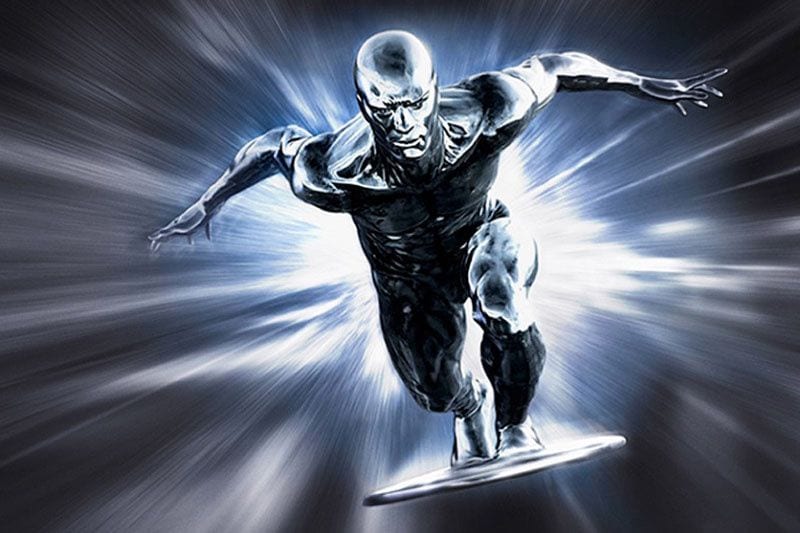
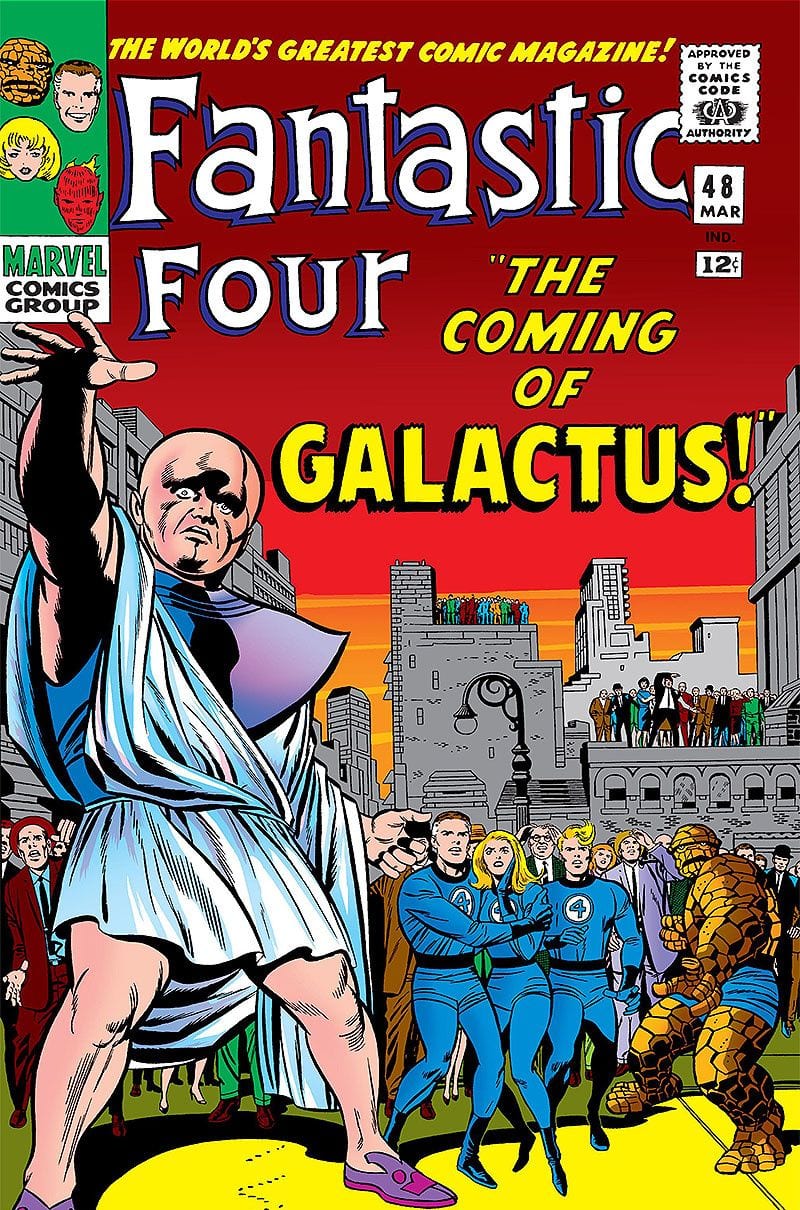
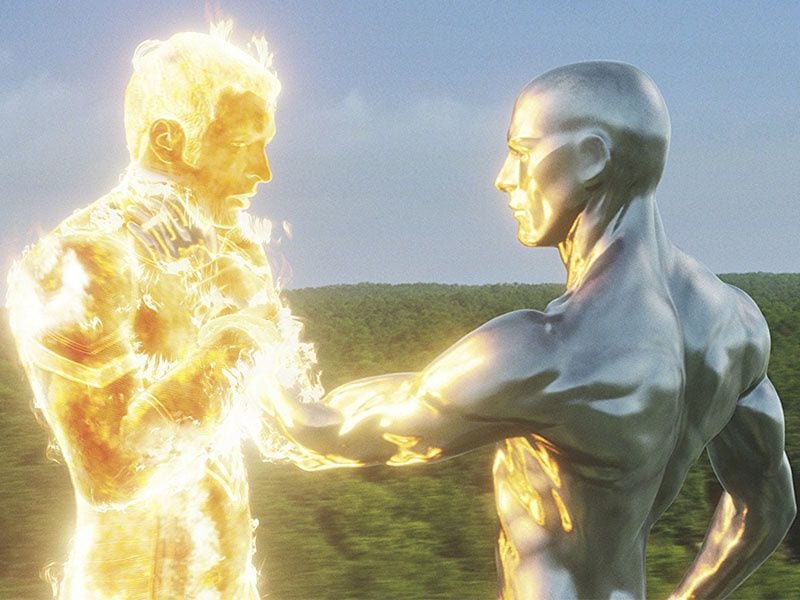
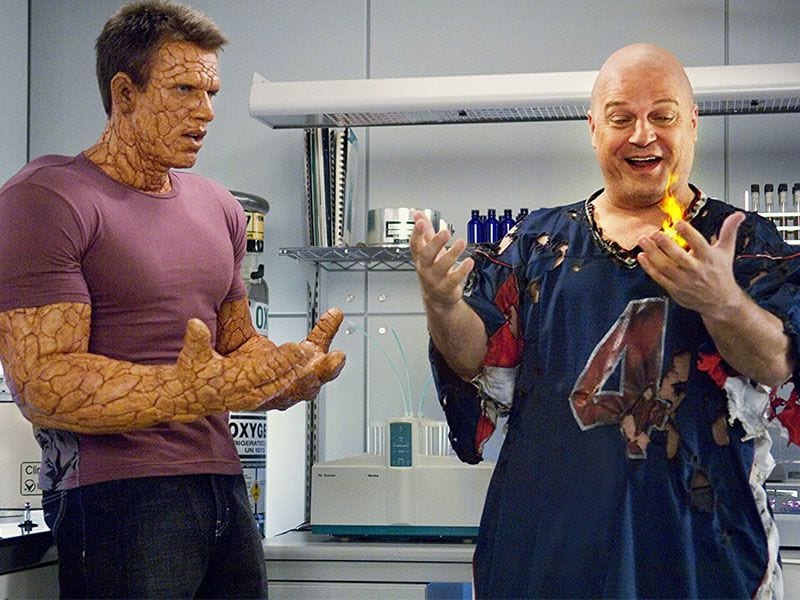

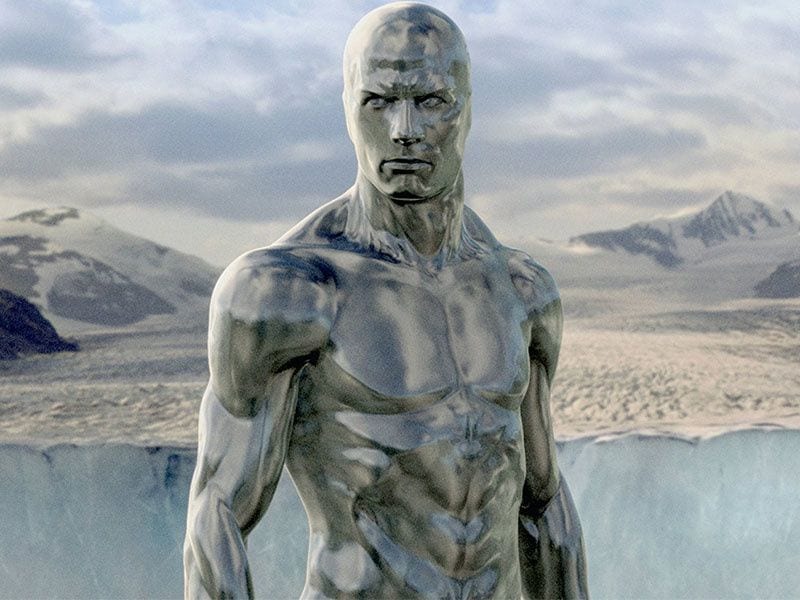
![Call for Papers: All Things Reconsidered [MUSIC] May-August 2024](https://www.popmatters.com/wp-content/uploads/2024/04/all-things-reconsidered-call-music-may-2024-720x380.jpg)



